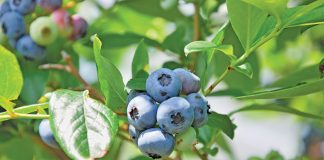In its latest market report, the USDA estimated that Brazil would produce 89 million tons of soya beans, an increase of one million tons on previous projections. Argentina’s production was unchanged at 54,5 million tons. Overall, the USDA projected that the global ending stock for soya beans would be 72,33 million tons, 1,17 million tons higher than the previous estimate.
This led to downward pressure on crop prices.
Locally, the report’s effect has already become evident. On 14 January, the CBOT price of soya beans delivered in January was R5 175/t, compared with R6 070/t in June 2013. Processed soya beans are the world’s largest source of animal protein feed and the second-largest source of vegetable oil, according to the USDA. De Wet Boshoff, executive director of the Animal Feed Manufacturers’ Association (AFMA), said that although international prices were under downward pressure, it did not necessarily mean that feed prices would also come down.
He pointed out that there were more variables involved in feed production than raw input costs and the exchange rate. “You should also remember that the inclusion rate of certain raw materials varies between types of feed,” he said. “For instance, broiler feed consists of between 55% to 60% maize and 25% to 30% soya. The feed ratio of cattle would be very different to this.”
Boshoff said that maize prices were currently higher than normal, due to tight supply and high demand. Prices were further fuelled by droughts and dry conditions in North West and the north-west Free State. “There’s also uncertainty around numerous farmers’ ability to finance a maize crop this year due to the difficulties they faced in the two previous seasons,” added Boshoff.
Meanwhile, the International Trade Administration Commission (Itac) recently indicated that it was investigating the possible revision of the current import duty structure on oilcakes, which currently hold a 6% ad valorem duty, according to the January edition of Afma Matrix. The previous soya oilcake review started on 16 March 2010. At the time, Itac noted that there was a shortage of soya oilcake in the Southern African Customs Union (SACU) and that this was the most important protein source for feed manufacture in South Africa.
Itac found that a reduction of the import tariff on soya oilcake would have an adverse effect on the competitive position of the oilseed production sector (farming) as well as the crushing side of the sector (oilcake producers). As a reduction in the duty would lower their already moderate duty structure, Itac recommended in March 2012 that the 6,6% import duty remain in place for another three years in order for the local industry to prepare for heightened competition from the rest of the world.
According to SARS statistics, the import duty paid on imports since March 2012 amounted to R202 million, which further added to the industry’s costs. AFMA has already made it clear that it would be in favour of the removal of import duties on soya beans and soya oilcake. AFMA members utilised 814 604t of the 1 092 390t available in the feed manufacture market during 2012/2013. Of this, 67% (728 150t) was imported.












